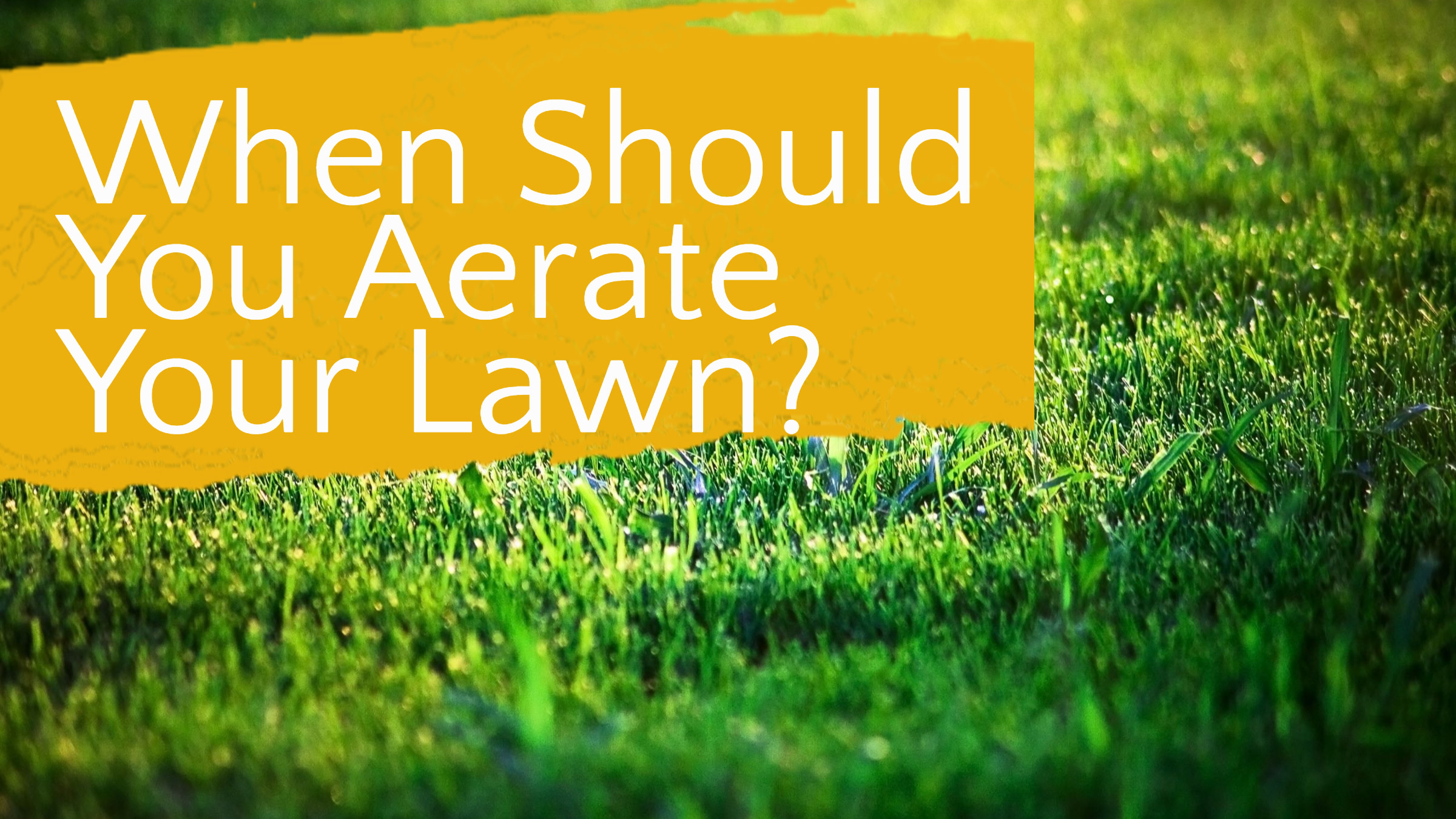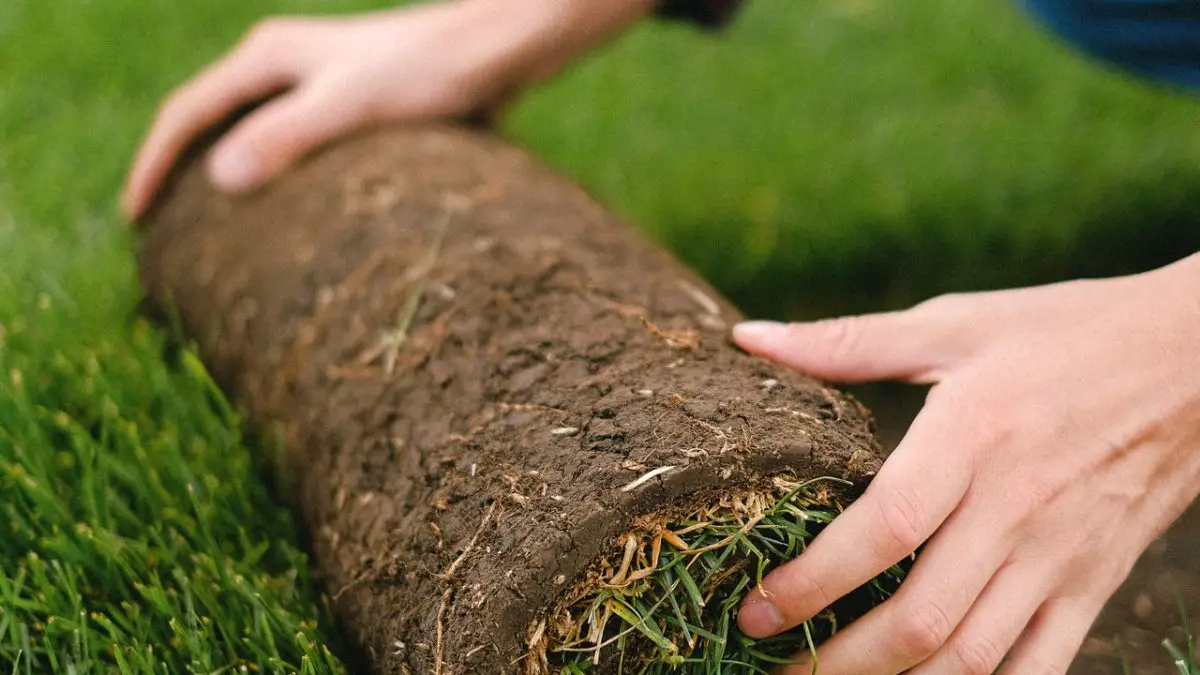How Often Should You Aerate Your Lawn?

How often should you aerate your lawn? If you want to keep your lawn looking its best, aeration should be a regular part of your maintenance plan.
Aeration Basics
Aerating your lawn is the process of perforating it with holes to give it better access to air, nutrients, and water. The goal is to help the grass roots penetrate deeper into the soil, producing stronger blades of grass and a healthier lawn. How often you should aerate your lawn depends entirely on the lawn itself.
A good rule of thumb is annual aeration will suffice for a healthy lawn. A densely compacted lawn laid on heavy clay soil or one that is suffering from too thick a layer of thatch may need to be aerated multiple times per year.
Why Aerate?
There are two primary reasons to aerate a lawn. The first and probably most common is soil compaction. The second is to prevent it from becoming suffocated under too thick of a layer of thatch.
Sometimes, our lawn can become compacted. That means that there is too much soil compressed into too small of a space, resulting in poor air circulation and preventing the penetration of water and vital nutrients into the soil. That deprives the grass of the organic matter and flow of air it needs for vigorous growth.
Do I Need to Aerate?
But how do you know if you need to aerate your lawn? Certain activities and situations are likely to increase the need for aeration.
First, if your lawn gets heavy use, it probably needs to be aerated. Basically, suppose your entire lawn is the neighborhood Wiffle ball field, or you routinely have a lot of foot traffic across the turf. In that case, you should consider aerating to break up the compacted soil.

Some lawns start out as sod. If your lawn was laid down in strips of sod, it’ll likely need aeration. When sod is laid over an existing soil base, the soil on the bottom tends to be much denser compared to new sod. In contrast, the finer soil of the new sod sits on top of the foundation, and they never really mix.
That can lead to stunted root growth, as the grass can’t penetrate into the denser bottom layer. It can also cause water to get stuck in the top layer, unable to break deeper into the soil. The results can lead to a well-watered lawn on top that really isn’t delivering water to the roots. Instead of the roots drinking up the water that the grass needs, the water sits on the top layer in puddles that evaporate or runoff.
Other situations also compact soil and tend to create a need for aeration. If your lawn area has seen construction or been compacted by machinery, aeration is key to keeping it healthy. To test for an overly compacted lawn, grab a screwdriver and slip it into the soil. If you can’t push it in easily, your soil is too dense.
Thatch is a layer of dead and living grass between the soil and the blades of grass. Some thatch is essential for healthy lawn growth. It helps to retain moisture, provide cushioning, and insulate the roots. If your lawn has excessive thatch, it can lead to similar problems related to the lack of water penetration.
A good way to see the thickness of the thatch layer is to use a spade and slice out a small slice of your lawn. It doesn’t have to be more than a shovel depth. Five or six inches is plenty. If the thatch layer is much thicker than about a half-inch to an inch of thatch, it’s time to aerate. You can also use dethatching tools to focus on removing the excess thatch.
When Is the Best Time to Aerate Your Lawn
The best time to aerate your lawn depends on the grass type you are growing. Once you know your type of grass – whether you have cool-season grass or warm-season grass, you can determine when to aerate it.
It’s best to aerate during the months of the growing season and not when the grass is dormant. The air temperature needs to be right for grass variety as well. This allows grass to grow into the aerated sections, promoting healing and growth. For cool-season grasses, that means the ideal period for aeration is in late summer and early fall (August to October). With warm-season grasses, look to aerate in the late spring and earlier part of the summer (April to June).
Aeration Frequently Asked Questions
Want to know more about aeration or lawn care? We have the answers.
Is Aerating Your Lawn Worth It?
That depends on what you’re looking for out of your lawn. If you don’t mind having a densely compacted lawn with an unchecked thatch layer that might be a bit patchy, weak, and spongy, maybe it’s not worth it. Not everyone cares about having a beautiful lawn.
Another time where it might not be worth it to aerate a lawn is if you have a lot of man-made infrastructure right under the lawn surface. As you might imagine, irrigation systems and low-voltage wiring don’t mix with aerators.
If keeping your lawn healthy is important, or if you have any aspirations of having a lush and soft green lawn that is the envy of your neighbors, setting up a schedule of frequent aeration is probably essential.
How Much Should Lawn Aeration Cost?
If you have a commercial service mowing your lawn, they should be able to aerate your lawn for a nominal fee. As pros, they likely have all the equipment needed and the know-how needed to use it properly.
But, a DIY solution is also going to be pretty easy and inexpensive. You can buy an professional aerator for a couple of hundred dollars. There are much cheaper options for great manual aerators. Or, you can probably rent one locally for less than a hundred bucks. The best solution depends on your comfort level and the size of your lawn!
Should I Pick Up Plugs After Aerating?
You don’t have to pick up soil plugs after aerating. Rather, you should leave them in place. They will break down, and the nutrients locked in them will eventually cycle into your lawn. If you feel that they are unsightly, you can break them up by running your lawnmower or using the back of a rake.
If you can’t wait a week or two, then you can always rake them up. But consider composting them, as they are packed with nutrients.
While I don’t think it’s necessary, some people like to add some sand to the soil to fill the holes. I prefer to focus on adding quality, turf-building fertilizer that overseeds the lawn. The new grass roots will help keep the soil loose. Even if you only have a small lawn, a spreader is a handy piece of equipment. It will spare you from lugging around bags of seed and fertilizer while letting you distribute them with precision.
Should You Cut Your Lawn Before Aerating?
Not necessarily, especially if your lawn is pretty short. If it is a bit longer, mow it down to about an inch or an inch-and-a-half. This will help your post-aeration fertilizer and seed applications be more effective.
While mowing beforehand is not essential, having a good moisture level is. So, if your lawn is dry, it’s a good practice to thoroughly water the lawn. While you’re at it, don’t forget to use flags to mark any areas to avoid: Sprinkler heads, invisible pet fence wires, and the like don’t mix with aerators.
What Kind of Aerator Should I Use?
There are three types of aerators. A spike aerator is a tool that simply pierces holes into the ground. They are just repeatedly jabbing a pitchfork into your lawn. Slicing aerators use a system of spinning blades to cut through the thatch layer and into the soil, ostensibly loosening things up.
The third type of aerator is widely regarded as the best equipment for this job. A core aerator has hollow tines that are pushed into the grass and soil. When extracted, plugs of soil (also known as cores) pop out, leaving little holes that are corridors for better air, nutrient, and water exchange.
Core-aerators are standard equipment. There are types you can tow with a tractor, push manually, and gas-powered machines that are best for extensive lawns. You can buy one, or rent one, relatively inexpensively. Remember, there may be some parts of your lawn that need aeration while others don’t. It’s ok to be selective.

